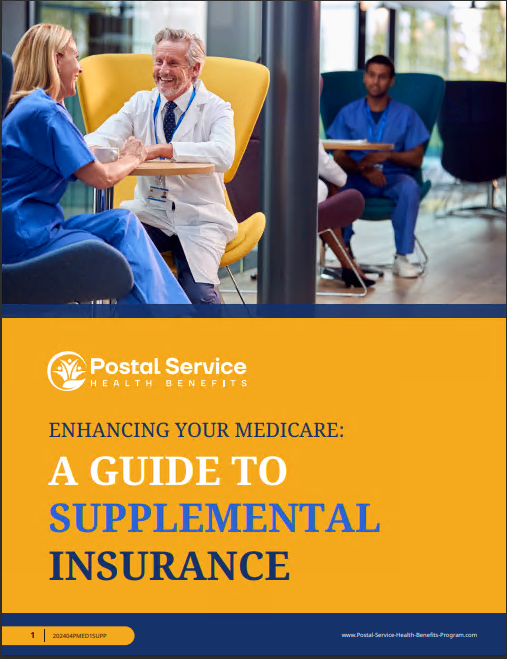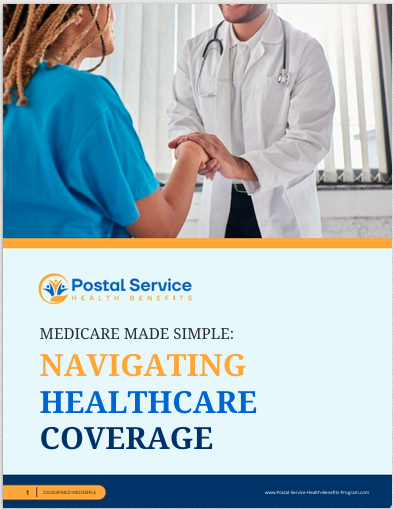Key Takeaways
-
Medicare Part A, often referred to as hospital insurance, works alongside PSHB plans to reduce your out-of-pocket costs for inpatient hospital stays, skilled nursing care, and hospice services.
-
Understanding timelines, costs, and eligibility requirements for Medicare Part A ensures seamless integration with your PSHB plan and helps you avoid potential late enrollment penalties.
Getting Familiar with Medicare Part A Basics
When enrolled in a Postal Service Health Benefits (PSHB) plan, Medicare Part A can become a critical part of your healthcare coverage as you reach age 65. Part A is designed to help cover hospital-related expenses, making it a valuable partner to your PSHB benefits. If you’re not fully sure how it works or when to enroll, don’t worry—this article breaks down everything you need to know.
What Exactly Does Medicare Part A Cover?
Medicare Part A primarily focuses on inpatient care. This includes:
-
Hospital Stays: Coverage begins after you’ve met the annual deductible. Part A pays for your room, meals, and general nursing care in a hospital setting. You’ll also receive coverage for semi-private rooms.
-
Skilled Nursing Facility (SNF) Care: After a qualifying hospital stay, Medicare Part A helps cover care in a skilled nursing facility for rehabilitation.
-
Home Health Services: Limited home healthcare services may be covered under certain conditions.
-
Hospice Care: Comprehensive support for end-of-life care, including pain management and counseling.
Who’s Eligible for Medicare Part A?
To qualify for Medicare Part A, you must meet one of these criteria:
-
Be age 65 or older.
-
Be under 65 and have a qualifying disability.
-
Have end-stage renal disease (ESRD).
If you’re already receiving Social Security or Railroad Retirement Board (RRB) benefits at least four months before turning 65, you’ll typically be enrolled automatically.
Cost of Medicare Part A in 2025
Most individuals qualify for premium-free Part A. This is based on having paid Medicare taxes for at least 10 years (40 quarters). If you haven’t met this threshold, you can still enroll, but you’ll pay a monthly premium.
In addition, the inpatient hospital deductible for 2025 is $1,676 per benefit period. Coinsurance applies after 60 days of hospitalization, with higher amounts kicking in after 90 days. Skilled nursing facilities also have daily coinsurance for extended stays beyond 20 days.
Why Medicare Part A Matters for PSHB Enrollees
How Part A Complements Your PSHB Plan
Your PSHB plan already provides robust coverage, but integrating Medicare Part A into your healthcare strategy can help reduce out-of-pocket expenses, particularly for inpatient care. Here’s how it works:
-
Primary vs. Secondary Coverage: When you’re enrolled in both Medicare and a PSHB plan, Medicare typically pays first (primary) for Part A services, and your PSHB plan covers some or all remaining costs.
-
Lower Cost-Sharing: With Medicare Part A picking up the bulk of inpatient costs, your PSHB plan can reduce or even eliminate leftover expenses such as coinsurance and deductibles.
-
Special Benefits: Many PSHB plans waive certain costs for enrollees who also have Medicare, giving you additional financial advantages.
Medicare Enrollment for PSHB Members
To make the most of your PSHB coverage, you need to enroll in Medicare Part A at the right time.
Initial Enrollment Period (IEP)
Your IEP begins three months before your 65th birthday, includes your birthday month, and extends three months after. This 7-month window is the easiest time to enroll without penalties.
Special Enrollment Period (SEP)
If you’re still working or covered under an employer’s health plan when you turn 65, you may qualify for an SEP. This allows you to enroll in Medicare Part A without penalties once your employment ends or the group coverage stops.
General Enrollment Period (GEP)
Missed your IEP or SEP? The GEP runs from January 1 through March 31 each year, with coverage starting on July 1. Be aware that late enrollment penalties may apply if you delay.
Coordinating Medicare Part A and PSHB Benefits
Avoiding Coverage Gaps
Since PSHB coverage already includes hospital benefits, many people wonder if enrolling in Part A is necessary. While it’s not mandatory, having both ensures you’re protected against high-cost situations that one plan alone might not cover.
Example Scenarios of Coordination
-
Inpatient Hospital Stay: Medicare Part A pays first. Your PSHB plan may then cover your deductible and coinsurance.
-
Skilled Nursing Facility: Medicare covers the first 20 days fully. For days 21-100, coinsurance applies, and your PSHB plan may cover those costs.
-
Out-of-Network Care: Medicare’s broad network often reduces your need to rely solely on PSHB for coverage when traveling or in remote areas.
Timelines and Deadlines to Keep in Mind
Automatic Enrollment
If you’re receiving Social Security or Railroad Retirement Board benefits, you’ll likely be enrolled in Medicare Part A automatically when you turn 65. You’ll receive your Medicare card about three months before your birthday.
Manual Enrollment
If you’re not automatically enrolled, you’ll need to sign up yourself through the Social Security Administration. This is particularly important if you’re delaying Social Security benefits.
Annual Open Enrollment
Remember that PSHB plans have their own annual Open Season (usually mid-November through mid-December) where you can adjust your health benefits. While Medicare Part A enrollment is separate, coordinating changes to your PSHB coverage during this period can optimize your benefits.
Common Questions About Medicare Part A and PSHB Plans
Do You Need Medicare Part A If You Have PSHB?
While you’re not required to enroll in Part A, doing so can significantly reduce out-of-pocket costs, especially for inpatient care. Plus, premium-free Part A means there’s little downside for most people.
Can You Delay Enrollment Without Penalties?
You can delay enrollment if you’re still actively employed and covered by a federal health plan. Once you retire, you’ll have a Special Enrollment Period to sign up without penalties.
What Happens If You Don’t Enroll?
If you’re not eligible for premium-free Part A and decide not to enroll, you’ll need to rely entirely on your PSHB plan. This could mean higher out-of-pocket costs for hospital care.
Are There Additional Costs Beyond Part A?
While Part A is free for most, it doesn’t cover everything. Items like private rooms, personal care items, and extended stays in skilled nursing facilities might incur additional costs. Coordinating with your PSHB plan ensures better coverage for these gaps.
Making the Most of Your Benefits
Regularly Review Your Coverage
Health needs change, and so do plan details. Reviewing your PSHB and Medicare benefits annually ensures you’re maximizing value.
Take Advantage of Preventive Services
Medicare Part A covers some preventive services, such as screenings, which can complement your PSHB plan’s offerings.
Use Your Resources
Both Medicare and the PSHB program provide tools, online portals, and customer service to help you navigate your benefits. Staying informed helps you make better healthcare decisions.
Why Medicare Part A Is Worth Considering
By integrating Medicare Part A with your PSHB plan, you gain financial security and broader access to care. For most enrollees, the combination reduces high costs for hospital services, ensures better protection, and simplifies healthcare management.
Stay Ahead of Deadlines
Don’t wait until the last minute to explore your Medicare options. Whether it’s during your Initial Enrollment Period or a Special Enrollment Period, understanding your timelines helps avoid penalties and ensures a smoother transition.






